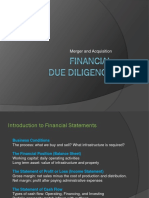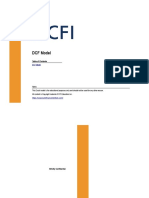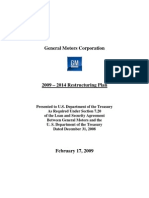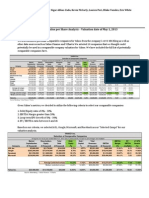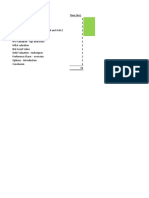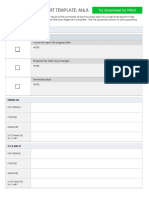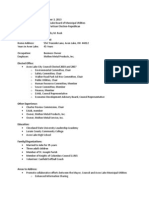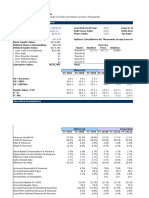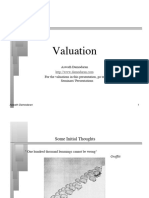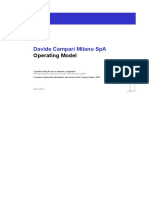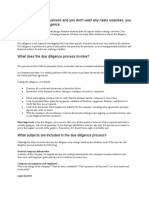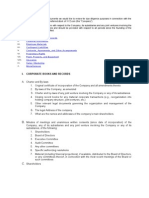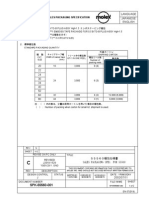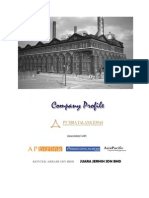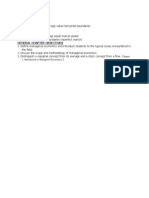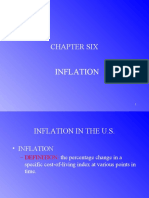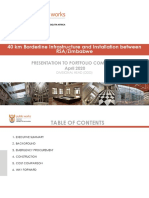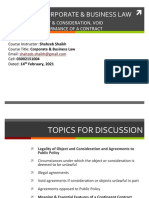Pytheas Business Guides
January 2001
Due Diligence Request List
www.pytheas.net
�Pytheas Business Guides
Due diligence is a form of research conducted by investors to make certain they are getting exactly what they agreed to buy.
Copyright 2001 Pytheas Limited
16 November 2001
�Pytheas Business Guides
DUE DILIGENCE Due diligence is a form of research conducted by investors to make certain they are getting exactly what they agreed to buy. For the venture capital investment process, due diligence means a rigorous investigation and evaluation of an investment opportunity before committing funds. This investigation is conducted by the parties involved in preparing a registration statement to form a basis for believing the statements contained therein are true and that no material facts are omitted. This process includes review of its management team, business conditions, projections, philosophy, and investment terms and conditions. Absolutely vital to making a sound investment, due diligence verifies any business opportunities that survive the initial screening stage. This verification process consists of checking the accuracy of business plans, audited accounts, and management accounts; getting replies to warranty and other standard questionnaires; patent searches; and technical studies. Unpublished accounting information and subjective information are equally important; these data are collected by calling customers, suppliers, lawyers, and bankers, and by checking trade journals. Due diligence emphasizes understanding and quantifying the risk of the proposed deal, rather than the upside. Factors that are analyzed and verified during due diligence: Track record of the management team Size and growth potential of the market Demand for product among target customers Ability to deliver product on time and at agreed price Competitive advantage of product Competitors Marketing and distribution plans Soundness of financial projections Assessment of assumptions used Assessment of intellectual property rights, if any Existing or possible legal contingences Valuation for the venture.
Copyright 2001 Pytheas Limited
16 November 2001
�Pytheas Business Guides
Due Diligence Study Areas Management Chief Executive Officer; Number Two & Three in Management; Management as a Team; Organizational Structure & Decision-making; Management Characteristics; Corporate Ownership; Documentation; Management Reports; Strengths & Weaknesses Corporate Organization; Employee Compensation; Profit-sharing Plan; Bonus Plan; Payroll Records; Training Program; Attitude and Morale; Record Maintenance; Reports; Motivation; Hiring Procedure; Consultants; Ratio Analysis Marketing People; Products; Customer Description; Customer Service; Competitive Analysis; Industry Analysis; Marketing Strategy; Product Distribution Production Management; Personnel and Organization; Production Process; Purchasing, Suppliers, Shipping, and Receiving; Efficiency Analysis; R&D Management, Personnel, and Organization; Cash and Investment Management; Documentation; Analysis of Financial Operations; Financial Statement Analysis; Other Assets and Liabilities; Taxes; Analysis of Projections General information about the company; Reference List: Bank, Other Institutional Lenders; Accounting Firm; Law Firm; Suppliers; Customers; Competitors; Agents, Consultants, Stakeholders, Trade Associations, Brokers
Personnel
Marketing
Production
Financial Area
Reference Area
Investors want to see your business plan and other information. If you have it ready before they ask for it, this may speed up the due diligence process and increase your chances of raising capital as they see your company is competent and keeps excellent records. During the due diligence stage they may see factors they don't like so will use it to either to negotiate better terms for their investment, or to exit and you get no cash.
DUE DILIGENCE REQUEST LIST Set forth below is a list of the documents that are reviewed for due diligence purposes in connection with the proposed purchase of shares of preferred stock of the company in question (the "Company"). All documents requested below are with respect to the Company, its subsidiaries and any joint ventures involving the Company or any of its subsidiaries and should be provided with respect to all periods since the founding of the Company, unless otherwise specified. The list represents a standard due diligence request list and attempts to be over-inclusive rather than under-inclusive. It is understood, therefore, that certain items may not be
Copyright 2001 Pytheas Limited
16 November 2001
�Pytheas Business Guides
appropriate to the Company, its subsidiaries and joint ventures, and others may need to be added as one becomes more familiar with the Company, its subsidiaries and joint ventures. I. II. III. IV. V. VI. VII. VIII. IX. X. Corporate Books a nd Records Fina ncia l Informati on Employee Mat erials Cont ingent Liabil iti es Cont ra cts, Agreem ents, and Other Arra ngements Propri etary Ri ghts Plant, Propert y, and Equipm ent Insurance Sales / Ma rketing Miscellaneous
Copyright 2001 Pytheas Limited
16 November 2001
�Pytheas Business Guides
I.
CORPORATE BOOKS AND RECORDS A. Charter and By-laws 1. 2. 3. Original certificate of incorporation of the Company and all amendments thereto By-laws of the Company, as amended Charter and by-laws of each wholly or partially owned subsidiary of the Company and of any joint venture involving the Company or any of its subsidiaries Closing record books for any material corporate transactions (e.g., reorganization into holding company structure, joint ventures, etc.) Other relevant legal documents governing the organization and management of the Company
4. 5. B.
Minutes of meetings and unanimous written consents (since date of incorporation) of the Company, any of its subsidiaries and any joint venture involving the Company or any of its subsidiaries, of the following: 1. 2. 3. 4. 5. 6. 7. Shareholders Board of Directors Executive Committee Audit Committee Any other committees Specific authorizing resolutions Material (including financial projections), if available, distributed to the Board of Directors, or any committees thereof, in connection with the most recent meetings of the Board or such committees
C.
Officers' and directors' questionnaires prepared in connection with the most recent proxy statement of the Company
Copyright 2001 Pytheas Limited
16 November 2001
�Pytheas Business Guides
D.
Shareholders 1. 2. 3. 4. 5. 6. Shareholder list and other stock records Any shareholder agreements, voting trusts, proxy agreements, escrow agreements or similar arrangements Any stock purchase agreements with shareholders Any agreements relating to preemptive rights or other preferential rights of shareholders Any agreements restricting the sale or other disposition of capital stock Any agreements or plans concerning outstanding or proposed stock options, warrants or rights, including any employee stock ownership plans Any agreements relating to registration rights of shareholders Any trust agreements or other documents if shares are held in fiduciary capacity
7. 8. E.
Qualifications and Registrations 1. 2. List of jurisdictions where qualified as foreign corporation or licensed to do business Any other material governmental qualifications, registrations, business licenses, permits, authorizations, exemptions or security clearances, including those pursuant to Federal or state antitrust, environmental, nuclear regulatory, public utility or public service or securities laws and regulations
F.
Reports to Shareholders 1. 2. Annual reports Quarterly and special interim reports since most recent annual report
Copyright 2001 Pytheas Limited
16 November 2001
�Pytheas Business Guides
II.
FINANCIAL INFORMATION A. Financial Statements 1. 2. 3. 4. 5. 6. 7. B. Consolidated financial statements for all years and interim periods subsequent to the most recent fiscal year end Monthly income statements for most recent 12 months Internal financial (profit and loss, capital expenditures, etc.) projections, and all supporting information Most recent business plan List of any off-balance sheet liabilities not appearing in most recent financial statements (including the notes thereto) Auditors reports ("management letters") and management responses Summary of accounting policies to the extent not disclosed in financial statements
Tax Materials 1. 2. 3. 4. 5. Income tax returns Description of and documentation relating to any pending issues with tax authorities Tax basis of assets of the Company and of capital stock and assets of its subsidiaries Tax sharing or indemnity agreements Closing letters and closing agreements, appeals reports, tax litigation status, tax authorities rulings and technical advice memoranda, and any other tax authorities material documents and tax assessments documents
C.
Indebtedness 1. 2. All instruments evidencing debt obligations or lines of credit and all agreements and material correspondence relating thereto Any other actual or contingent indebtedness (e.g., loan guarantees, letters of credit, banker's acceptances, swaps) not reflected in most recent financial statements and all agreements and material correspondence relating thereto List of existing key financing institutions
3. D.
Miscellaneous 1. 2. Schedule of current notes payable/receivable, inter-company advances and description of cash management system Description and listing of current reserves
Copyright 2001 Pytheas Limited
16 November 2001
�Pytheas Business Guides
3. 4. 5. 6. 7.
Description of revenue/cost recognition policies Breakdown of selling, distribution, marketing and administrative expenses Explanation of foreign exchange accounting policies, if any Information regarding any indebtedness to the Company or any of its subsidiaries of directors and senior officers Cost of sales breakdown
Copyright 2001 Pytheas Limited
16 November 2001
�Pytheas Business Guides
III.
EMPLOYEE MATERIALS A. Agreements 1. Employment agreements (including, but not limited to, contracts with management personnel or entities affiliated with management personnel) Collective bargaining agreements Consulting agreements Employee handbooks, summaries, guidelines and bulletins Schedules of salaried and hourly employees showing their current compensation rates and breaking out employees by: a. b. c. d. e. f. g. 6. 7. 8. 9. B. Geographic location Function Age Years with company Union vs. non-union Participation in employee benefit plans Part-time vs. full-time
2. 3. 4. 5.
Description of labor disputes, requests for arbitration or mediation, grievance proceedings, etc. Description of negotiations with any unit or group seeking to become the bargaining unit for employees Employee turnover, absentee history and severance policy Description of any union representation elections
Benefit Plans 1. Any pension, supplemental pension, retirement, post-retirement, stock option, severance, incentive, profit-sharing, executive compensation, bonus and other employee benefit plans (and any related trust agreements and insurance or annuity contracts), including information regarding employer stock held there under, a schedule of plan assets, a detailed description of the plan (including structure, etc.) and a list of trustees Audit and actuarial studies and reports including summary plan descriptions, annual returns and income tax authorities filings, concerning pension and retirement plans and details of any accrued liabilities not reflected therein List of any asset transfers or other withdrawals, partial wind-ups or contribution holidays with respect to all pension plans
2.
3. C.
Organizational Information 1. 2. Detailed organization chart List of all directors and officers
Copyright 2001 Pytheas Limited
16 November 2001
10
�Pytheas Business Guides
3. 4. 5.
Biographies of senior management and any outside directors Schedule showing number of employees for each year and interim periods List and description of current operations of each key business unit showing: a. b. c. d. Business purpose Key manager Key markets served Key facilities
Copyright 2001 Pytheas Limited
16 November 2001
11
�Pytheas Business Guides
IV.
CONTINGENT LIABILITIES A. Litigation 1. List of all pending or threatened litigation, arbitration, administrative or other proceedings involving the Company, any subsidiary or any joint venture involving the Company or any subsidiary, or any officer or director (including parties, remedies sought and nature of action) List and description of all pending or threatened government or other investigations involving the Company, any subsidiary or any officer or director Pleadings and other material documents in material litigation, arbitration and investigations and other proceedings Consent decrees, judgments, etc., under which there are continuing or contingent obligations Letters from lawyers to auditors concerning litigation and other legal proceedings
2.
3. 4. 5. B.
Regulatory Compliance 1. 2. 3. Description of any violations of governmental laws or regulations Material reports to governmental agencies Reports, notices or other correspondence concerning any known or alleged violation of sovereign antitrust, environmental, nuclear regulatory, public utility or public service or securities laws and regulations Agreements or commitments with governmental entities or other persons relating to clean-up obligations or other environmental liabilities Copies of correspondence between government agencies and the Company List of all governmental filings and consents required for a purchase of the stock of the Company
4.
5. 6.
Copyright 2001 Pytheas Limited
16 November 2001
12
�Pytheas Business Guides
V.
CONTRACTS, AGREEMENTS AND OTHER ARRANGEMENTS A. Not in the Ordinary Course of Business 1. 2. 3. Partnership agreements Joint venture agreements Contracts relating to material business acquisitions or dispositions (by transfer of capital stock or assets), including any separate tax or environmental agreements Stand-still agreements Confidentiality and trade secret agreements Agreements limiting the ability to compete with any other person or to engage in any line of business Corporate transactions with management or directors or affiliates Agreements to provide goods or services at below cost (other than promotional arrangements entered into in the ordinary course of business) Indemnification agreements for directors and officers Any other existing or pending material contracts not in the ordinary course of business Any material correspondence related to the above Closing record books with respect to each transaction
4. 5. 6. 7. 8.
9. 10. 11. 12. B.
In the Ordinary Course of Business 1. 2. 3. 4. 5. 6. 7. 8. 9. 10. Listing and description of key customer contracts Listing and description of key supply contracts Material sales representative, marketing, agency or distributorship agreements Material advertising agreements Material government contracts Agreements entered into or expected to be entered into for material capital expenditures Guarantee agreements Any agreement which contain change-of-control provisions Any contracts or agreements similar to the above which are presently under negotiation Any material correspondence related to the above
Copyright 2001 Pytheas Limited
16 November 2001
13
�Pytheas Business Guides
VI.
PROPRIETARY RIGHTS A. General 1. List and details of any material intellectual property rights registered or for which applications for registration have been, including, patents, licenses, trademarks, trade names, domain names, copyrights and other intellectual property rights (including technology transfers) Particulars of any license, royalty and other intellectual property agreements (where the Company, any subsidiary or any joint venture involving the Company or any of its subsidiaries is licensor or licensee) List and description of any pending or threatened claims for infringement or other violations of proprietary rights owned or used in the business of the Company, any subsidiary or any joint venture involving the Company or any of its subsidiaries, including any challenges as to the validity, subsistence or ownership of such rights List and description of any suspected or alleged infringement by third parties of intellectual property rights owned by the Company, any subsidiary or any joint venture involving the Company or any of its subsidiaries, or used in their business Arrangements for the disclosure of confidential information (which includes technical and commercial information and know-how which is not in the public domain) either by or to the Company, any subsidiary or any joint venture involving the Company or any of its subsidiaries Details of any agreements with employees and consultants regarding their use of the confidential information of the Company, any subsidiary or any joint venture involving the Company or any of its subsidiaries Agreements, policies or other arrangements relating to proprietary rights of employees in products of the Company, any subsidiary or any joint venture involving the Company or any of its subsidiaries (including royalty or other fee arrangements)
2.
3.
4.
5.
6.
7.
Copyright 2001 Pytheas Limited
16 November 2001
14
�Pytheas Business Guides
VII.
PLANT, PROPERTY AND EQUIPMENT A. Real Property 1. 2. 3. 4. 5. 6. 7. B. Description, location and character of all real property owned Material deeds, surveys and other real property title documents List of any material real property mortgages which are not disclosed in most recent financial statements List of all leased real property, including descriptions, terms of leases, sale and leaseback arrangements, options, annual costs, etc. Reporting letters and opinions regarding the acquisition of any material real property List of title insurance policies
Personal Property 1. 2. Description, location and character of all personal property owned List of all material leased personal property, including descriptions, terms of leases, options, annual costs, etc.
C.
Miscellaneous 1. 2. Description of facilities and plant, including listing of all material fixed assets and accumulated depreciation Any available appraisals
Copyright 2001 Pytheas Limited
16 November 2001
15
�Pytheas Business Guides
VIII.
INSURANCE A. B. C. D. E. F. G. List and description of all material property, casualty, liability and other insurance policies Any directors' and officers' liability insurance policies Description of present reserves for, and all potential claims with respect to, any self-insurance History of all insured claims including paid, reserved, and related expense amounts Loss runs for workers' compensation and general liability Loss history for any self-insurance Loss prevention/control recommendations made by insurers, brokers or consultants
Copyright 2001 Pytheas Limited
16 November 2001
16
�Pytheas Business Guides
IX.
SALES/MARKETING A. Description of the markets in which the Company, its subsidiaries or any joint venture involving the Company or any of its subsidiaries operate, identifying the type of customers and the size of the overall market (by value) Identify any customers which account for more than 1% of annual sales of the Company, its subsidiaries or any joint venture involving the Company or any of its subsidiaries or, if there are more than ten such customers, the ten largest customers 1. 2. 3. 4. The quarterly totals of sales Details of current sales order statistics available to management Sales comparison with the industry Copies of standard sales correspondence, returns and allowance material together with samples of all forms of purchase orders, invoices, warranty agreements, guarantees, etc Details of pricing policies and fluctuations Copies of all printed price lists Identification of principal competitors, a description of the basis of competition and the strength and weaknesses of the principal competitors Indication of the relative size of the Company, its subsidiaries or any joint venture involving the Company or any of its subsidiaries within the industry. Details of trade associations relating to the business and any company memberships Details of current advertising program (including copies of all promotional or other material used or capable of use in connection with the business) and the cost of the same and any other promotion programs Details of sales policies and methods of remuneration of sales personnel The policy on giving express product warranties and rights to customers to refunds, exchanges or credits following a purchase and the value of refunds, exchanges or credits given and warranty claims List the 10 largest suppliers Current research and development plans and budgets Correspondence and other documents relating to negotiations with competitors of the Company Consultants', engineers' or management reports and marketing studies relating to broad aspects of the business, operations or products
B.
5. 6. 7.
8.
9.
10. 11.
12. 13. 14. 15.
Copyright 2001 Pytheas Limited
16 November 2001
17
�Pytheas Business Guides
X.
MISCELLANEOUS A. B. C. D. E. Press releases Listing and description of subsidiaries, joint ventures, partnerships, etc. Description of any future acquisition or disposition plans Description of any future restructuring plans Description of Company's information management system, including any future changes planned.
Copyright 2001 Pytheas Limited
16 November 2001
18
�Pytheas Business Guides
Digging below the surface... Are there any problems with banks or suppliers? What are the sales and profit trends of the target business (increasing, decreasing, flat)? What moves have the competition made over the past couple years? Why is the business being sold? Is there any major competition coming? How do rates and selling practices compare with the competition? Who are the major accounts? How much do they spend? Are they under contracts? What percentage of accounts receivables are past 60 days? How much business was written off in the past year? Is the Company acurrent with its accounts payable? What terms do they have with their suppliers? Is there any pending litigation, claims, or liens against the business? What role does the Seller play in the management of the business? If the Seller leaves, will business walk out the door? How does the property(ies) compare with the competition? What about appearance? How do methods of distribution compare with the competition? What employees come with the deal? Are there any union issues? Is the equipment and software in good working order or obsolete? Is this the proper location for this business? Are there additional products that might be added to the fold? What stage are they in development?
As it relates to operations... Does the business have favourable long-term prospects? Can expenses be cut? Can departments be eliminated through a merger of the two operations? Are there any unnecessary expenses? Is the Company's head count larger than it needs to be? Can selling prices be raised? How much and how often without losing market share? Can production costs be lowered? Can the business be grown and can earnings increase without the need for additional capital?
Copyright 2001 Pytheas Limited
16 November 2001
19
�Pytheas Business Guides
IN VE ST IG AT I VE D U E D I L IG E N CE Investigative Due Diligence is a background investigation on the individual and/or the company. Investigative Due Diligence can be conducted with or without the knowledge of the individual or the company being investigated. 1. The Owner of the Company What happens if the owner is in great financial difficulty? What if there are outstanding lawsuits, judgments, child support obligations and credit card debts? Where do you honestly expect the invested funds to end up first? The owner may have told his or her outstanding creditors that payment would be resolved once company financing is in place. This could suggest that much of the funds invested will go to paying off personal debts instead of using the funds to expand the company as proposed in the business plan. In many cases where troubled companies are looking for capital, the owners have exhausted much of their personal reserves. It can be expected that paying off personal debts will happen in most of these situations. It is important, however, to know just how bad the debt situation is. How much of the investor's money will actually make it into the company? What were the past tactics of the owner? Have there been other companies owned by this individual that have gone bankrupt shortly after financing was obtained? Are there any old or current lawsuits against the owner or the company? Has the owner ever been bankrupt? Can this owner be trusted? What kind of person is he? Does he get on well with employees and managers? Is he a proven leader with vision? Has this person ever been written up in the media, a trade journal, or an industry publication? Was it a good or bad article? Where does he live? What kind of car does he drive? How much money does he have in the bank? What is the status of the mortgage on his home? It is common that an owner could obtain financing for his company and be deeply indebted to creditors. The owner may do everything possible to get money out of the company and into his pocket. Numerous fictitious invoices and companies can be created by the owner. The owner in these instances could write cheques to these companies that appear on the books as nothing more than valid business expenditures. Thousands could go into his pocket through one company name or another. It is the oldest trick in the book. Two very important investigations to conduct on the owner, in the background stage, are a credit search and a criminal record search. The credit search is important because it will yield information about the balance on credit cards, collection matters, and previous addresses, past employment, the works.
Copyright 2001 Pytheas Limited
16 November 2001
20
�Pytheas Business Guides
2.
Credit Searches It may be illegal for anyone in some countries to conduct a credit search on an individual without their consent. This means that the owner must be advised that a credit search must be conducted on him or her. It is customary that a simple written authorization is signed by the owner.
3.
Criminal Record Searches The law in regard to criminal record searches varies from country to country. In most European countries (Cyprus included) it is not public record and so it is completely illegal to obtain a criminal record search on an individual without their consent. If the owner resides in a location where criminal record information is not public record, the owner must provide a Certificate of Non-Conviction.
Disclaimer The above notes have been compiled to assist you; however, actions taken as a result of this document are at the discretion of the reader and not Pytheas Limited.
Copyright 2001 Pytheas Limited
16 November 2001
21








